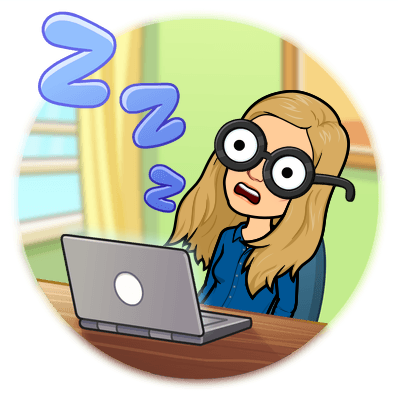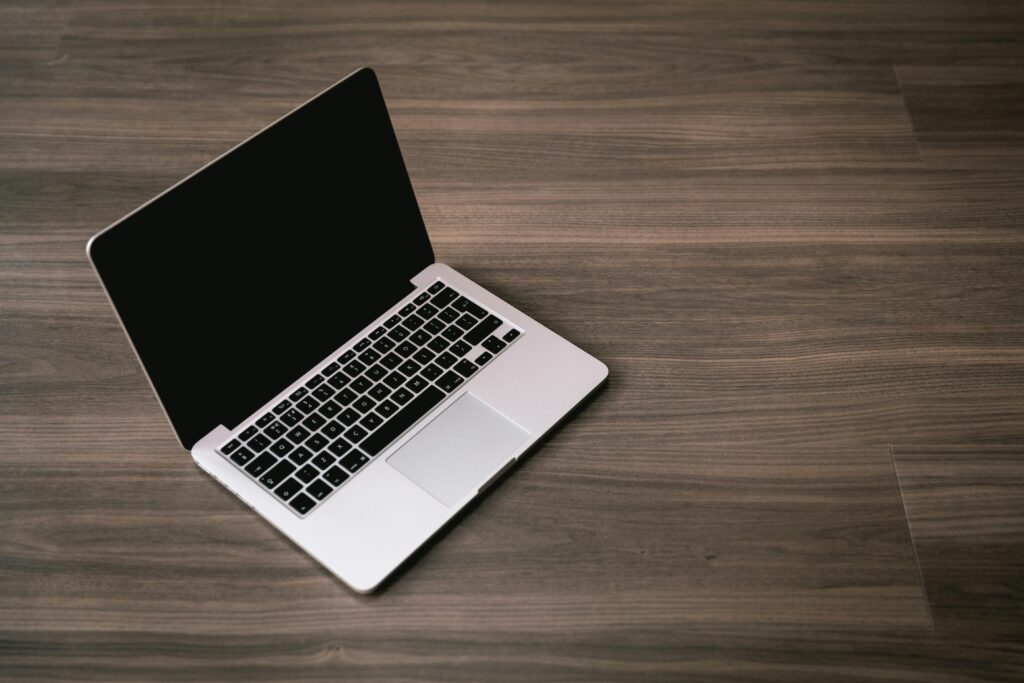I was very aware of our screen habits at home and the impact this might have on our daughters.
Anne Pirkkanen

In this article, Public Speaking & Communication Trainer Anne Pirkkanen explores Digital Minimalism and its effects on work and family life. Anne is a multilingual and multicultural mum of 2 international girls and she is passionate about mindful communication in work and personal space.
Today, I’d like to share the lessons I’ve learned from incorporating digital minimalism into my life. I’m all about effective communication and productivity hacks to make my life easier. I’ll describe my habits before adopting this approach and my changes after reading the book Digital Minimalism by Cal Newport. I will share some examples that I took from the book.
But before we get into it, let’s define digital minimalism.
Digital minimalism is a philosophy of using technology that means focusing your online time on a small number of carefully chosen and optimised activities that strongly align with your values and happily ignoring everything else.
Cal Newport
BEFORE READING THE BOOK
Before discovering the book in 2022, I used my phone, tablet and laptop. I sometimes didn’t like how much time I spent glued to my screens, especially on my phone. Also, I was very aware of our screen habits at home and the impact this might have on our daughters. So it was time I did something about it. But I needed to see what habits I wanted to change.
Summary of habits I wasn’t happy about
- Checking and replying to emails regularly seven days a week (work and personal)
- Posting, commenting and sharing content on LinkedIn nearly daily (for work)
- Surfing the web and making online purchases several times a week (personal)
- Watching useless YouTube videos
- Check the phone a million times daily for the “just in case.”
- Checking the Weather app several times a day (Why…?)
From this list, what most bothered me was the constant checking—the unconscious habit of picking up the phone for no reason.
The item stressing me out was posting, commenting and sharing content on LinkedIn nearly daily (for work). Here, I felt I had to do it versus it being something I wanted to do. It didn’t come from a place of joy.
I knew I was not the most addicted person to the phone, and I am used to spending longer periods with no phone or no internet connection. Also, quite a few years ago, I have been slowly dropping out of social media platforms, becoming a passive and infrequent user.
Good habits I had already incorporated before reading the book:
- I would not have my phone in my hand when spending time with our daughter (back then, just a one-year-old girl)
- I had silenced my phone years ago—no auditive or visual notifications
- I switched off data when out in the nature and mountains or retreats
- I had already left Instagram in 2020 (work profile; I don’t have a personal account)
- I had already left Facebook for work and kept a personal account for online course groups and mummy groups (super important for my integration in Switzerland)
- I didn’t see or read emails on my watch
- I didn’t read messages on my watch (only see they arrived)
- I didn’t use my phone between 8 pm and 8 am (only for alarm)
- I didn’t take out my phone to scroll when hanging out with my friends or family
So, when I read the book, I was very excited to see that I had already been adopting some digital minimalist habits. I was already halfway there!

I decided I didn´t want to get zoomed out after an intense day of screens.
I didn’t feel great after staring at screens for extended periods, especially on video calls.
I got slightly dizzy when scrolling through an online store from my phone for hours.
Then, my mind was fuzzy, and I got a headache after abusing screens.
AFTER READING THE BOOK
The first actionable item in the book was a 30-day detox involving removing nonessential apps from all screens.
Secondly, carefully reincorporate the essential or practical/comfortable apps that add value to your life.
The first task was to review your phone, tablet, computer, watch, all the browsers, all the web pages, all the desktops that you have, all the popups, and the push notifications. It also included Netflix and video games. So, look at which apps and programs you have that are:
- Essential to living -absolutely cannot live without
- Useful or bring comfort
- Useless – you could immediately delete
I did not do the strict 30-day detox as described, as I didn’t feel I had an addiction. My issue was not that I was glued 24/7 to the screen. I wanted to find more mindful and effective ways of using of my phone.
Nevertheless, this thought process challenged me to re-evaluate my apps and delete unnecessary and unused ones.
On my phone:
I saw I had apps like Docs, Excel, PowerPoint, stocks and video editor. I didn’t use them on my phone. So, I deleted those apps immediately. Easy, if I had never used it, I deleted it.
I removed the email app from the home screen. So, if I wanted to go to my email, I had to make an extra effort to find it on my phone. The two apps I was left to decide upon were Facebook and LinkedIn.
Facebook:
I was enrolled in an online course where we actively used a Facebook group. As indicated in the book, I created a shortcut link to that group on my desktop. I could access the group immediately from my laptop when I needed to enter the group and avoid distractions from opening the newsfeed.
LinkedIn:
As per an example from the book, I created a new desktop with other important “communciation” platforms I wanted to visit weekly. On my 4th desktop, I now have LinkedIn, YouTube and other relevant tabs. I precisely did not add Facebook as a tab. This is very well explained in the book. You can bring some habits back but in a mindful way. This resonated with me. The idea is that you find ways that feel good for you.
Nudge, you can connect with me on LinkedIn here if you haven’t already.
To summarise, I deleted both of the abovementioned apps from my phone. It felt like the right choice. Funnily, around the same time, I found out I was pregnant with our second one, so I also decided to stop actively engaging or posting on LinkedIn. I felt like Cal permitted me to go offline. I felt very relieved. Thanks Cal!
On my laptop:
Around the same time, I changed from a PC to a Macbook. It was a great moment to incorporate new habits to help me make more mindful choices on my Macbook. I removed all the icons that I didn`t use, rearranged the useful ones and additionally added four desktops:
- Personal
- Work
- Conferences
- Communication
So this way, when I wanted to work, I was not distracted by anything else. When I wanted to check my personal account, I would not check my work emails.
I thought the examples given in the book were beneficial as they seemed to cater to all kinds of users and were so practical and easy to implement immediately. Additionally, I drew two observations from this exercise.
Observation 1- Productivity
The clean-up of my phone and laptop highlighted the importance of using my time productively when eliminating digital distractions. When I was not distracted, I was able to focus much better. Another term the author defines as deep work. I focused on one task for a set amount of time without interruptions. The key word here is also being productive. As a mum of two little ones, it is an excellent exercise for becoming extremely productive. I often wonder what I wasted my time on before having children. What did I do 40-50 hours a week? I can do in 4 hours what I did in a few days.
Observation 2- Boredom
Sometimes, when I had a moment or felt slightly bored, I caught myself picking up the phone and having nothing to check. I checked the weather a few times a day for a few days. This made me giggle as I noticed how absent my mind was, picking up that phone out of habit even though I knew there was nothing to check. Eventually, I stopped picking up the phone, which felt strange, so I picked up my book. I see how boredom, even a few seconds of nothing to do, can trigger the habit of checking the phone—the fear of missing out on Instagram. I’m glad I don’t have this fear anymore, nor am I on the platform.

MY NEW DIGITAL MINIMALIST LIFE
After eliminating low-quality screen time, the second step was to replace it with high-quality activities. The book suggested doing something with your hands or something creative, starting a new hobby, joining a club or any task requiring higher concentration levels and thus giving more joy and pleasure— a high-quality activity.
I already had quite a lot of this in my life, so I was not worried that I would feel lost or bored if I reduced my screen habits. What I would replace it with was crystal clear: reading more books. I put a book next to the sofa where the phone usually was. So I would pick up the book instead of the phone. This was a game-changer in the beginning. Life with two small children is also intense enough that my phone habits naturally reduced from what they had been some years back.
High-quality activities
Concrete examples of high-quality activities in my life are reading physical books, cooking, gastronomic experiences with friends, yoga, meditation, rock climbing, hiking, skiing and doing room escapes. Some of these I do alone, some with my husband and some with friends. These are tasks where the phone or screens are not part of the equation, except if I’m looking up a recipe or taking a photo and not posting it anywhere.
If you are curious to find out more about me, check my website in About ME section.

To recap, this is how I operate nowadays:
- The essential apps are on the home screen of my phone. I only have 25 apps on three screens on my phone.
- The other practical apps in the app library
- My laptop has four desktops with relevant tabs and emails open. Nothing old or useless.
- My watch is on silent and has only the essentials to see time, stopwatch, fitness & exercise tracking and the weather.
- I will download the LinkedIn App on my phone when I go to events to quickly connect with people and then delete it again. I will do the same for other Apps if necessary.
OTHER OBSERVATIONS
Beyond tangible changes, the intangible aspects of improved communication skills and deeper connections stood out.
Our society is too dependent on the screens, instant messaging and social media. This damages face-to-face communication skills, leading to a loss of empathy and understanding. This I can observe in my work as a Communication Trainer. You cannot connect with someone “not there” but in another world online. The eyes are the window to the soul and are an essential component of communication and connection.
How can you read body language if you cannot see the other person’s face or make eye contact?
This issue will take on a new dimension once the virtual and augmented reality glasses become more mainstream. Imagine talking to your friend or colleague wearing the Apple Vision PRO headset.
Anne Pirkkanen
I worry about the direction in which our young ones are heading. It is not only about being a mum but also about being a communication trainer. Life is not instant messaging. Life happens around us when we are glued to our phones or in a different dimension, interacting with Dinosaurs or scrolling on Insta.
What is happening to being present with our friends?
What is happening to our children’s ability to communicate face-to-face?
What is happening to everyone’s ability to read and show emotions?
What if we just took more time to visit a loved one instead of scrolling through their Instagram page, throwing low-quality interactions, such as likes?
These are questions that everyone should be asking themselves. How do they want to show up in this world? I certainly don’t enjoy half-hearted get togethers where people are absent minded. I love connecting with people, having great conversations, telling and listening to good stories, asking questions, and laughing together.
To sum up my learnings and takeaways from what I’ve experienced after applying digital minimalism to my life:
- I must repeat this “cleanup” several times a year on all devices.
- I have improved my ability to focus, and I get distracted less at work
- Increased face-to-face and live interactions with my loved ones
- Investment in my mental well-being by meditating more
- Setting a good example for our children
- Being present makes me a better listener
- I feel these are durable and realistic changes that will stay
- Focusing on a balanced and fulfilling life with meaningful activities for the family and me
Would you be willing to take on the challenge of digital minimalism?
Share your thoughts and experiences, and let’s explore this transformative journey together. You can email me at anne@version2ofme.com
Until next time!
Cheers,
Anne Pirkkanen
Public Speaking & Communication Trainer
Bio: About Me
WEB: Version 2 of ME Communication
LinkedIn: Anne PIrkkanen
Bookings: Calendly
**Cover image by Craig Dennis from Pexels
**QR code on White paper image by Koolshooters from Pexels




